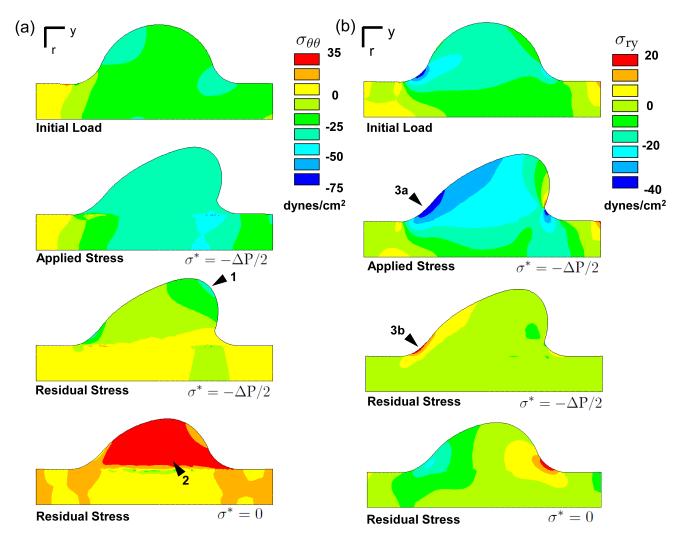Fig. 8.
Growth and remodeling induces residual stress. a) Circumferential residual stress is influenced by growth in the radial-axial plane. The residual stress is maximal at the cushion leading edge, where the radial position in the AV canal is shortest (arrow 1). It is compressive because 1) circumferential stress is higher than the homeostatic stress which stimulates growth, and 2) the circumferential retractions are insufficient to match the reduced space due to radial growth toward axis of symmetry. With σ* = 0, the applied compressive load stimulated circumferential resorption which resulted in a tensile residual stress (arrow 2). b) The residual shear stress is mainly localized to the cushion/myocardium interface on the inflow surface (arrows 3a-b). The negative applied shear stress results in a positive residual stress due to the accruement of inelastic shear deformation in that region.

